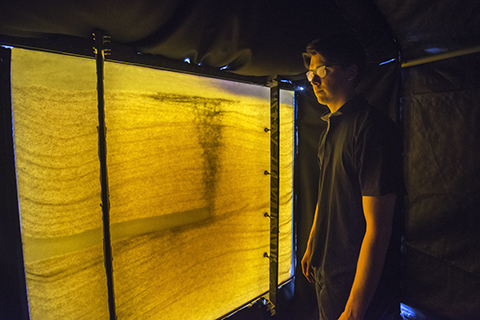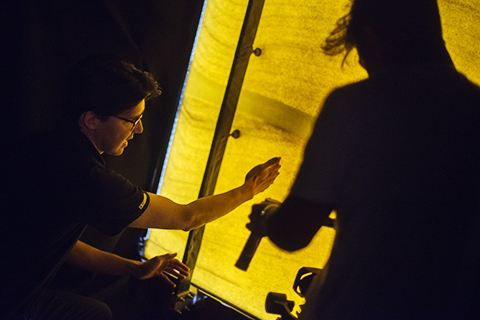By Gareth Chamberlain with files from Matt Mills, FEAS communications
Unconventional oil and gas operations are ever-growing as the abundance of conventional oil resources declines. Unlike the petroleum obtained by pumping directly from concentrated deposits via an oil well, unconventional oil and gas is held tightly in porous rock and requires different methods of extraction. One concern associated with these extraction methods is stray gas migration, in which gas is unintentionally released into overlying aquifers, potentially contaminating groundwater and releasing greenhouse gas into the atmosphere.
This is the principal area of study for Cole Van De Ven, a Ph.D. candidate supervised by Dr. Kevin Mumford in the Department of Civil Engineering here at Queen’s University. Over the past four years, Van De Ven has investigated the flow of methane through groundwater and its interactions with the surrounding geology.
“It’s a concern because it can degrade water quality for people who rely on it as a source of drinking water,” says Van De Ven. “It is also a concern for people living in proximity because natural gas is combustible. So, if you potentially filled up their basements with that gas, you could run the risk of explosion.”
While he initially explored gas movement in shallow groundwater separately from the effects of gas dissolution in groundwater, he is now examining both phenomena simultaneously.
“One of our main goals is to visualize the gas movement and subsequent dissolution in a controlled environment,” says Van De Ven. “It’s very difficult to go out to the field and know everything that’s happening. There are a lot of people who are really good at that but we want to break it up into smaller systematic pieces to learn exactly what’s going on.”
Van De Ven’s research culminates in an experiment in which he uses a 150 cm ´ 150 cm ´ 2 cm transparent cell filled with water-saturated sand. It looks a bit like a large ant farm. The cell represents a slice of an aquifer. Methane is released into the bottom of the cell to simulate a subsurface gas leak. The gas then rises as water flows across the cell. The cell is backlit with a large LED panel, rendering the sand inside bright but making the gas appear darker by contrast. The movement of the gas can then be recorded with a camera set to capture an image every five to 10 seconds.
Aqueous samples are collected from different layers in the cell and analyzed for dissolved methane concentrations. Other factors, such as flow rate and pressure difference, are recorded to allow for more detailed analysis. Finally, for the dissolution stage, images are captured every five minutes to allow for a more accessible and visual examination.
“One of the things we like to highlight is the power of the visual techniques that we use,” says Van De Ven. “We are actually able to show something to people that they can’t see. Groundwater is below the surface, so it’s a really hard thing for people to conceptualize and to imagine what’s going on. Part of the power of what we do is actually showing people what’s happening in the subsurface.”

THE POWER OF VISUAL TECHNIQUES: Natural gas appears dark against the illuminated background of the water-saturated sand making it easier to see as the gas moves through the flow cell.
PRECISE DATA: A camera inside a darkened tent is set to take pictures of the gas every five to 10 seconds as it migrates across the flow cell during the methane injection phase.

IN-DEPTH DEMONSTRATION: By learning how natural gas moves through layers of sand in the lab, Van De Ven hopes to build a better understanding of how natural gas moves through the subsurface environment after it is released from damaged or inadequately sealed wells used for unconventional oil and gas development.
By Gareth Chamberlain with files from Matt Mills, FEAS communications